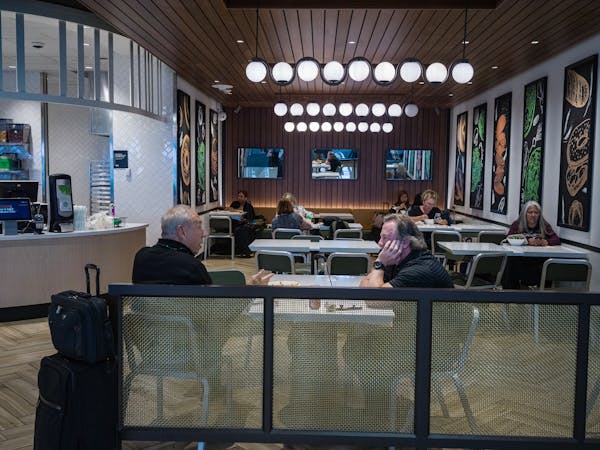The Federal Aviation Administration is looking to change the technology used to direct planes in and out of Minneapolis-St. Paul International Airport, raising questions of whether flight paths could change and if the FAA will hear the concerns of residents below.
The Metropolitan Airports Commission's Noise Oversight Committee, made up of officials from various nearby cities, is forming an outreach plan to let residents know what the FAA wants to do. The group aims to avoid the missteps the commission made the last time the FAA proposed consolidating flight paths.
"The last thing you want is for the FAA to get ahead of the communities," said Chris Swanson, a Richfield city staffer who sits on the noise committee.
A decade ago, the FAA proposed using satellite navigation to route more planes into narrower flight paths. Residents along those paths were outraged, especially because they felt ignored.
"With no real input from the communities, it seemed like this was going to be run through," said Bob Kane, an Edina resident who was among dozens protesting the changes in the early 2010s.
Edina and southwest Minneapolis residents mobilized against the changes in flight paths: Chain emails pinged around neighborhood groups, and residents packed airport commission meetings.
Richfield residents had supported the changes that would have routed more planes over Crosstown Hwy. 62, but Edina residents worried the plan would send more planes their way.
"They successfully mobilized and we were drowned out," Pam Dmytrenko, then Richfield's assistant city manager, told the Star Tribune in 2012.
After the outcry, the FAA put the navigation system updates on hold.
In other cities, updated navigation systems have meant new flight paths over neighborhoods unaccustomed to flight noise. Now, the FAA says it's time to move to the new navigation system here. It could be in place by the summer of 2025.
The Airports Commission and city leaders are trying to figure out how to get the word out about what the FAA has planned and how to get feedback from a broad cross-section of residents, not just those who can attend midmorning meetings of the noise committee to offer comments.
Swanson said Richfield wants to make sure people know what the FAA proposes next year. If outreach is successful, he said, communities won't be caught off-guard and could be prepared to let the airport commission and the FAA know what they think.
The new navigation system and procedures are becoming standard at larger airports.
"The FAA is continually modernizing the National Airspace System to improve safety and efficiency," a statement from the agency read.
Edina City Manager Scott Neal said he hoped the technology — and the possibility of new flight paths — will mean noise is spread out across the metro, both west and east of the airport.
Neal said Edina residents' protests were part of stopping the new navigation system and route changes a decade ago. He said the routes needed further study back then. But he knew the issue would come up again. "We're ready for a conversation this time," Neal said.
Worried residents like Kane hope the airport commission and FAA are ready to talk, too.
The airport commission and FAA "have to not only say they're engaging with community stakeholders but truly listen and not just saying they're listening ... [to] truly understand the lives of the people underneath," he said.

Want to share info with the Star Tribune? How to do it securely

'Safe recovery sites' would offer syringes, naloxone and more to people using drugs. The plan could be in peril.
New Minnesota GOP leaders seek peace with party's anti-establishment wing

Who is Republican Lisa Demuth, Minnesota's first House speaker of color?

